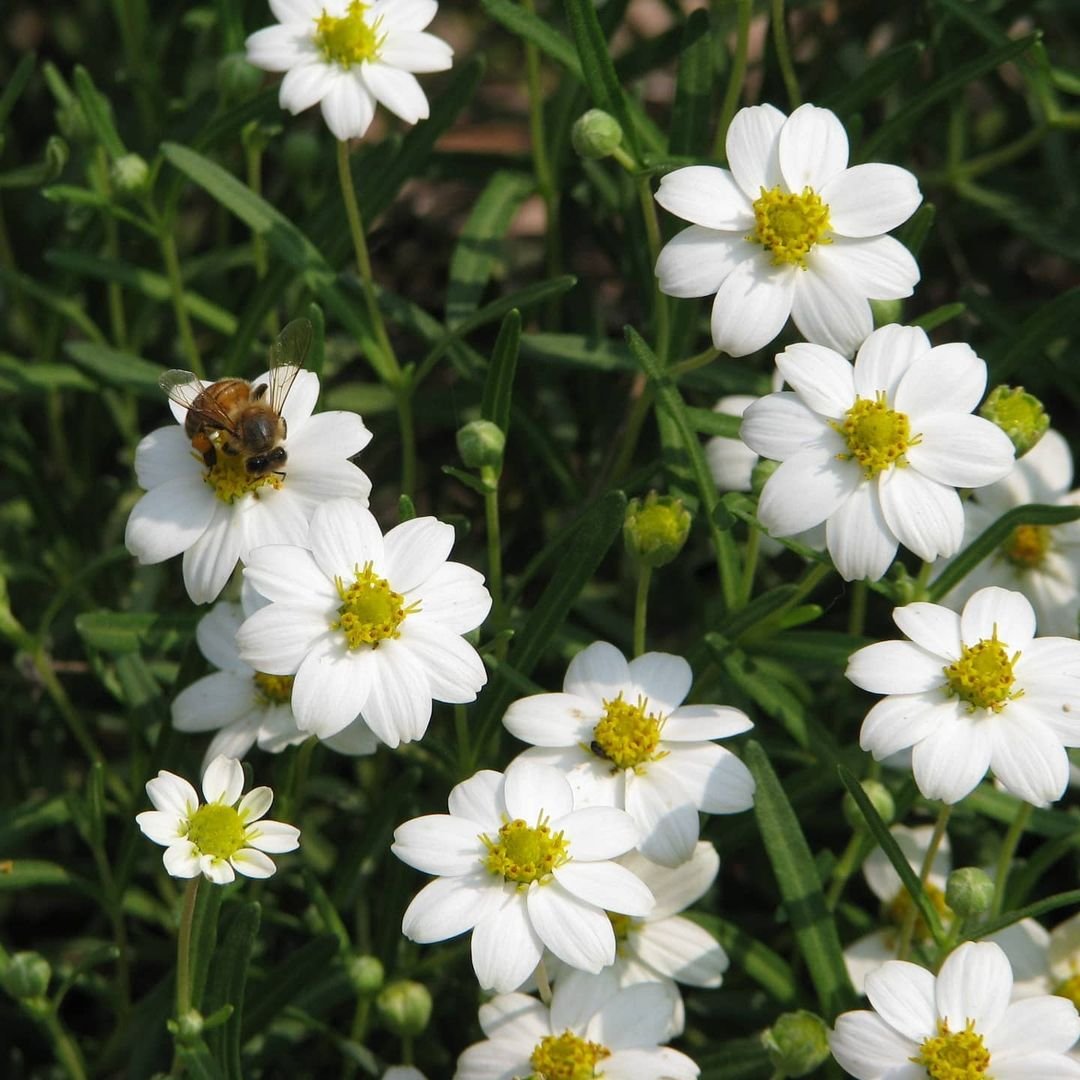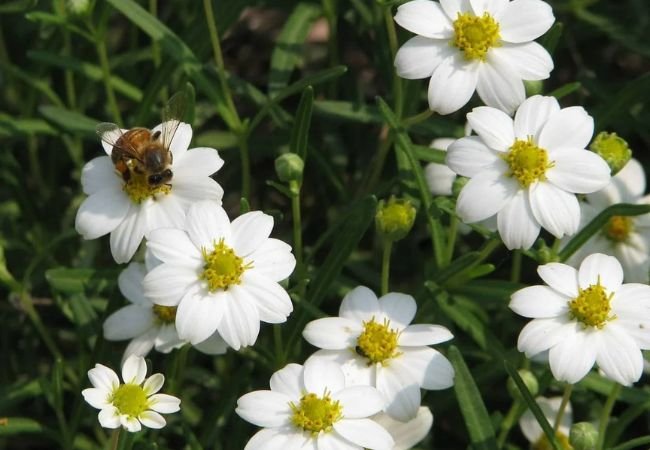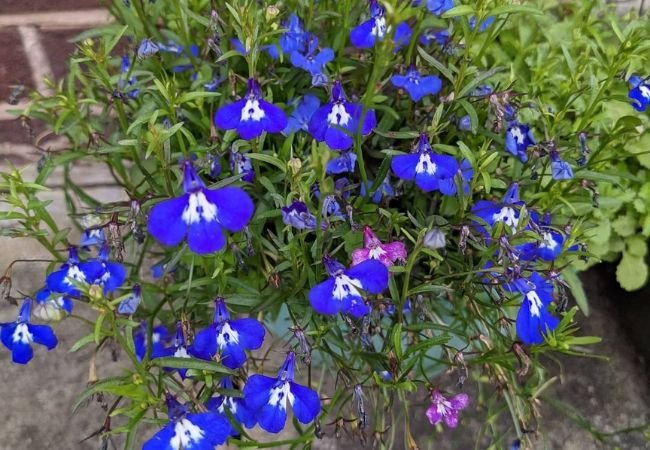Discover the cheerful Melampodium flower – learn how to grow these sun-loving blooms, their care requirements and why they’re perfect for gardens in hot climates. A beginner-friendly guide to brighten up your outdoor space.
Have you seen small, yellow flowers that look like daisies and bloom all summer long? Those might be Melampodium! These happy little flowers are great for gardens, especially in hot areas. Let’s learn about Melampodium and how you can grow them at home.
Here’s some information about Melampodium flowers:
| Category | Information |
|---|---|
| Botanical name | Melampodium divaricatum |
| Common name | Melampodium |
| Plant type | Annual or perennial |
| Hardiness zone | Zones 9-11 |
| Sun exposure | Full sun |
| Soil type | Well-drained, fertile soil |
| Watering | Moderate watering |
| Growth habit | Bushy, mounding |
| Height/Spread | 12-18 inches tall, 12-24 inches wide |
| Special features | Profuse yellow or white daisy-like flowers, drought tolerant |
What is Melampodium?

Melampodium is a type of flowering plant that comes from Central and South America. They’re known for their bright yellow flowers that look like small daisies. Melampodium plants are tough and can handle hot weather very well.
What Do Melampodium Flowers Look Like?
- Size: Plants are usually 12-24 inches tall and wide
- Flowers: Small, yellow, daisy-like flowers about 1 inch wide
- Leaves: Green, oval-shaped leaves
- Growth: Bushy and compact
To learn more about plant characteristics, visit the USDA Plants Database.
Growing Melampodium in Your Garden
Want to grow Melampodium at home? Here’s what you need to know:
- Sunlight: They love full sun – the more, the better
- Soil: They grow well in most types of soil, as long as it drains well
- Water: Water regularly when young, but they’re drought-tolerant once established
- Temperature: They thrive in hot weather
For more gardening tips, check out the National Gardening Association.
Planting Melampodium
You can plant Melampodium in spring after the last frost:
- Choose a sunny spot in your garden
- Dig a hole as deep as the plant’s container
- Place the plant in the hole and fill with soil
- Water well after planting
- Space plants about 12-18 inches apart
Caring for Melampodium
Melampodium is very easy to care for:
- Water during dry spells, but don’t overwater
- No need to remove dead flowers – they keep blooming on their own
- Fertilizer isn’t usually necessary, but you can use a balanced fertilizer if you want
- Trim back if they get too big for your space
Uses of Melampodium in the Garden
Melampodium has many uses in the garden:
- Borders: Plant them along walkways or garden edges
- Ground cover: They spread out to cover bare soil
- Containers: Great for pots and hanging baskets
- Attracting pollinators: Their flowers attract bees and butterflies
To learn more about gardening for pollinators, visit the U.S. Fish & Wildlife Service Pollinator page.
Types of Melampodium
There are several types of Melampodium, but the most common for gardens is:
- Melampodium paludosum: Also called “Butter Daisy” or “Gold Medallion”
Melampodium and Climate
Melampodium grows best in warm climates. They’re great for gardens in the southern United States where summers are hot. In colder areas, they’re often grown as annuals (plants that live for one growing season).
To find out which plants grow best in your area, check the USDA Plant Hardiness Zone Map.
Pests and Problems
Melampodium is generally very healthy and pest-resistant, but watch out for:
- Overwatering: Can cause root rot
- Poor drainage: Can lead to yellow leaves
- Deer and rabbits: They might eat the plants, but it’s not common
If you see any problems, ask for help at your local garden center or contact your state’s Cooperative Extension office.
Melampodium in Containers
Melampodium grows well in pots and hanging baskets. When growing in containers:
- Use a pot with drainage holes
- Fill with good quality potting soil
- Water more often than plants in the ground
- Place the container in a sunny spot
For container gardening tips, visit the USDA’s Container Gardening page.
Melampodium is a great choice for gardeners who want cheerful, easy-to-grow flowers that can handle hot weather. Whether you’re filling a garden bed, brightening up a patio, or adding color to a window box, Melampodium can bring a sunny touch to any space. With very little care, you can enjoy these pretty blooms from spring until fall.
Remember, every garden is unique. Don’t be afraid to experiment and find out what works best in your space. Happy gardening!
For more gardening tips and plant care guides, visit usagardenhub.com.






